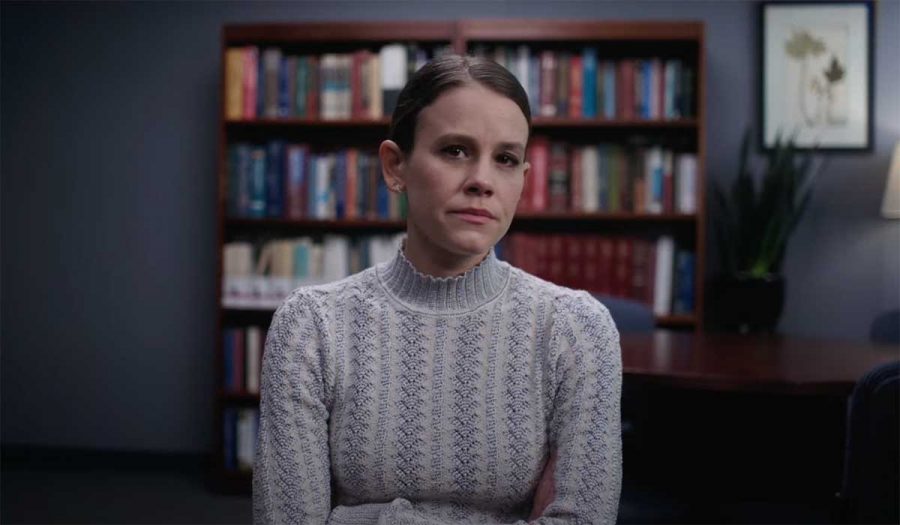★★★★✩
After watching the trailer for “Smile,” I went in expecting two hours of trashy fun. The promotional materials not-so subtly suggest a final product closer to the typical big budget shock film and not a movie with deep pathos, subtle filmmaking and a lot to say about some universal experiences.
Thematically, “Smile” does not ever play coy. This is a film about trauma, anxiety, grief, depression and our unhealthy coping strategies. This motif notably takes root in the main villain as an irony, who always forces its victims into the titular grin in an inversion of expectation to the meaning of happy faces before using their bodies for acts of unspeakably grievous self-harm; Acts whose primary witness is always next in line to be targeted, reflecting the often virulent spread of trauma.
Sosie Bacon really blossoms on the screen as Rose, a therapist at a psychiatric ward, evading all potential melodrama and beautifully navigating the portrayal of a highly successful woman falling apart in the face of events more affecting than she would ever admit. Kyle Gallner, Kal Penn and Carl Renken also do a good job in their supportive roles as old flame, concerned colleague and unhinged but sympathetically written patient respectively. There are a few minor characters comical in their pettiness, but they fade into the background as the true story unfolds.
The goodness doesn’t stop at the performances though. It also extends into the often oblique, underappreciated craft of filmmaking. Tilted and even upside-down camera perspectives and uncomfortable close-ups all are utilized to great effect in order to disorient the audience. The sound design is best described as ominous and full of jumpscares matched with extremely effective hard cuts. Another thing of note is the use of lighting, practical effects and CGI. The former two are used in clever capacities to really ratchet up the tension, whereas the latter is the necessary climax and catharsis to long periods of quiet dread, usually in the form of some truly nightmare worthy body horror. Some of that spectacle is admittedly campy, but you can tell that those elements are intentionally made that way to steer the film away from sinking into total pretentiousness as similarly themed films often do.
There is much ink to be spilled about the ending. The use of fakeouts borders on gratuitous. Both the traditional hero’s triumph and the classic “bad” ending, one where the protagonist gives into their worst desires are dangled but never followed through upon. The viewer is instead denied any closure, quietly reminding the viewer that moments spent with a “Smile” are never to be taken for granted.












